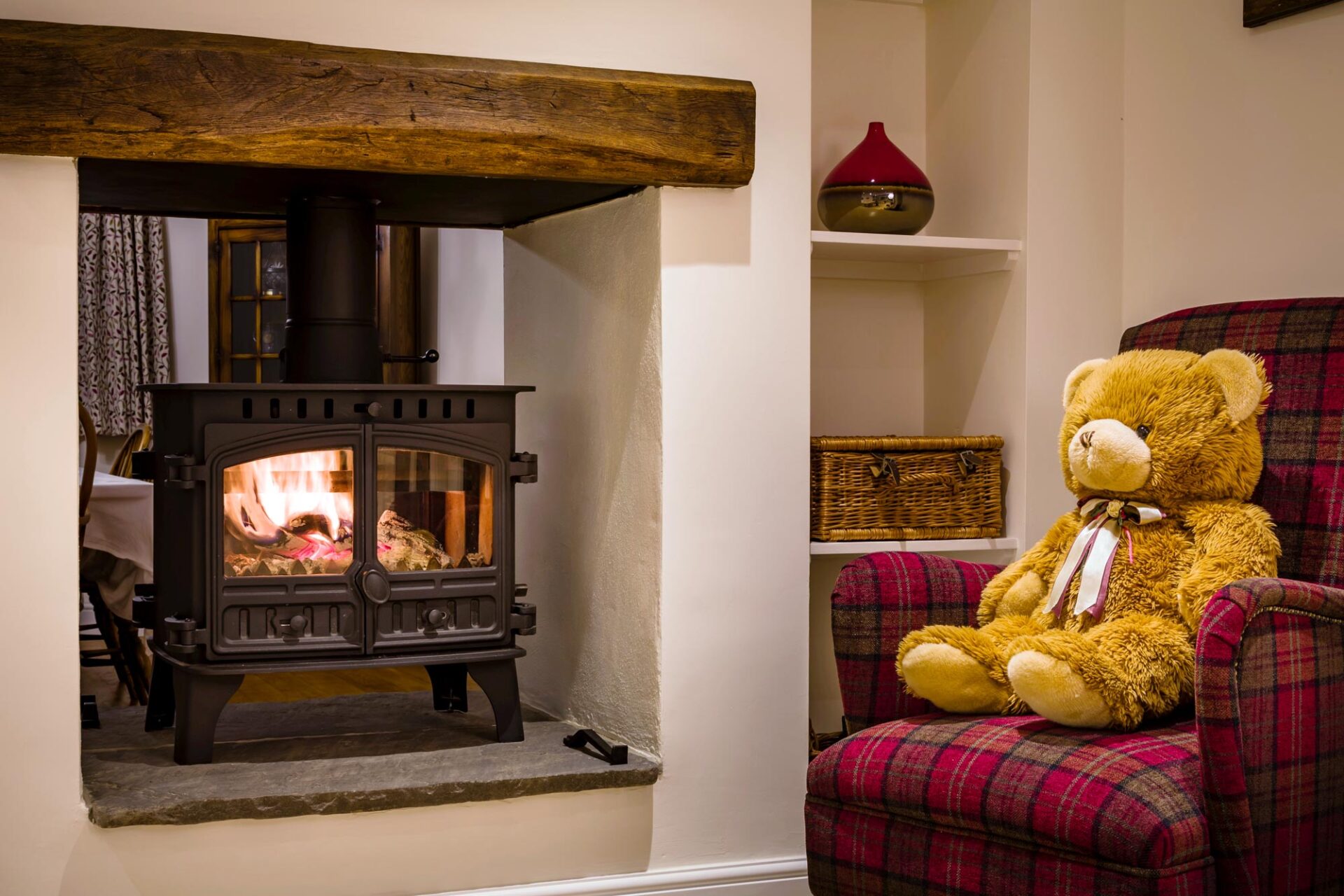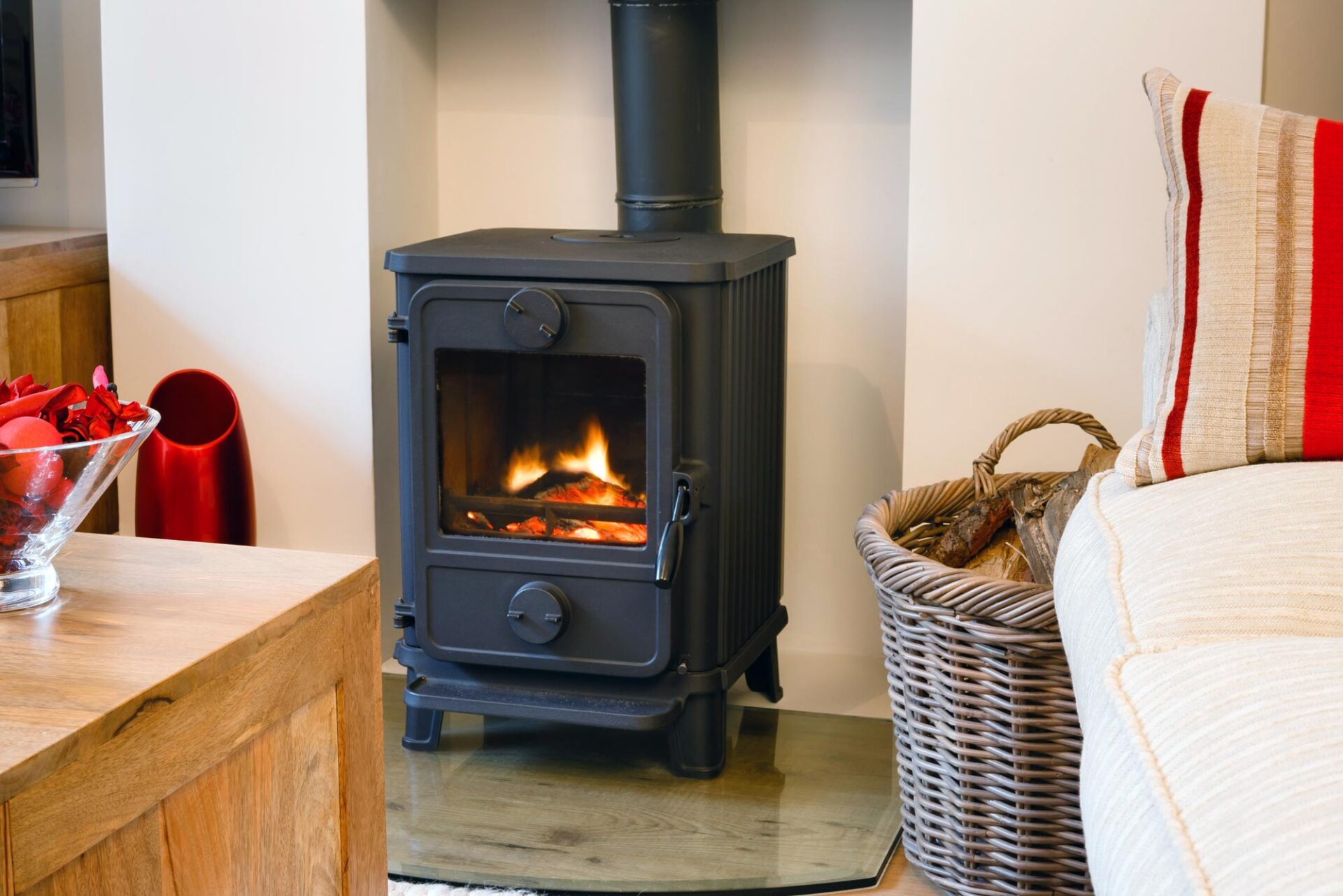Choosing a wood-burning stove is not necessarily a simple task. It’s easy to focus on its appearance and design, and forget that a wood-burning stove’s primary task is to heat your home (although there is naturally also a certain cosiness factor to consider). In this blog, we’ll give you tips on how to choose the right wood-burning stove for your home, whether it’s old, modern or renovated.
When it comes to wood-burning stoves, a lot of people like to see large flames, hear a little crackling every now and then, and feel the warmth washing over them. However, when buying a wood-burning stove, you need to think about what it actually is: a small combustion plant that is designed to emit a so-called “nominal output”, with a recommended power range provided by the manufacturer.
This means that you should be aware of your heating needs, and how the wood-burning stove will work with any other heating solutions you have.
Choose your wood-burning stove based on your winter needs
A complicating factor is that your heating needs vary significantly over the seasons. Therefore, you should choose your wood-burning stove based on your heating needs in the cold winter time, not on mild use in spring or autumn time, or solely on the cosiness factor.
Your wood-burning stove can also contribute the most to the national energy system during the winter by relieving pressure on the power grid when power consumption is at its highest and most expensive.
Wood-burning stoves for new, energy-efficient homes
The heating requirements of new and energy-efficient homes are already relatively low, as they are often fitted with balanced ventilations, heat recovery units and electrical equipment that contribute to keeping the inside warm. Therefore, you should choose a wood-burning stove that does not have a very high nominal output.
Wood-burning stoves primarily heat the room they are in. Other rooms are then heated to a degree, depending on how well the hot air can spread throughout the home.
To figure out how much heat you need for your home, you can start from a maximum heating requirement per square metre. For very energy-efficient homes (so-called “passive homes”), this is 10 watts per square metre (W/m2), and for low-energy homes, can be up to 20 w/m2. In a 100 m2 home, this would correspond to a continuous output of 1 kilowatt (kW) and 2 kW, respectively.
Wood-burning stoves typically have a power range that is between 50% and 150% of the nominal output. This means that if your wood-burning stove has a nominal output of 4 kW, it can cover the energy needs of a low-energy, 100 m2 home with a continuous output of just 2 kW. Alternatively, you could fire at nominal output (4 kW) for half the time or at maximum power (6 kW) for a third of the time. This is a simplification, as there are various other factors that also need to be considered, but it can be a good starting point.
Wood-burning stoves for renovated older homes
If you have an older home that has been renovated with improved insulation and you want to replace the old wood-burning stove, you should get a stove with a lower nominal output. The additional insulation is often not sufficient to bring the home up to the same level as a low-energy home, so a wood stove with a nominal output of 6 kW with an output range between 3 kW and 9 kW would probably be better for a 100 m2 home.
Wood-burning stoves for poorly insulated older homes
If you want to replace a wood-burning stove in an older home that has significant heating needs, you should install a wood-burning stove with a similar nominal output to the current one – provided that you’re satisfied with the heat from this stove and you tend to operate it within the recommended power range.
Some people will reduce the air supply to their wood-burning stove to make the fire burn for longer. However, this leads to high emissions and poor energy utilisation. Instead, you should get a wood-burning stove with a lower nominal output.
Older homes generally have poorer insulation and are not very airtight. Therefore, wood-burning stoves with a nominal output of 8 kW or more and a subsequent power range between 4-12 kW would be more suitable for a 100 m2 home.
However, if you have more than 100 m2 to heat, you must increase the power further or keep the fire burning for longer periods of time. However, large old homes tend to have several wood-burning stoves, and many homes with several floors have the option of installing a wood-burning stove on more than one floor. Heat rarely travels downwards, so a wood-burning stove in the living room on the ground floor will be of little help in terms of heating the basement floor.
Follow the manufacturer’s recommendations
New wood-burning stoves are much more energy efficient and produce much lower emissions than old wood-burning stoves. However, this higher energy efficiency is taken into account when calculating the nominal output. This means that you can still use the nominal output to compare the heat output of various wood-burning stoves.
However, there are also human factors to consider when burning wood. If you’re following the manufacturer’s recommendations for using your specific wood-burning stove, you’re on the right track. To get the most even release of heat as possible, you shouldn’t leave it too long between adding wood. It is better to add a little less but more often. If you want to get a lot of heat for a longer period of time, you must switch to stoves made of heat-retaining material, such as soapstone. This will enable the stove to emit heat for many hours after the fire has gone out.
If the stove produces too much heat, resist opening the windows, as this results in poor energy utilisation and increased fuel expenses. It is much better to avoid the problem and achieve a suitable and more even release of heat by choosing a wood stove with the right power range and operating it as efficiently as possible.
You should also remember that wood-burning stoves are not freestanding. They are connected to a chimney pipe, which works like an engine in a car, while the air damper is the gas pedal. When you first light a fire, the stove is cold and the draft in the chimney is low. This means you have to light the fire in a sensible way, and preferably from the top in order to ensure a good combustion start and a gradual draft build up.
Once the fire is well underway, the draft is high enough for the air damper to be used as an accelerator pedal – however, don’t reduce the air too much in an attempt to make the fire burn for a long time. A wood-burning stove typically weighs 100 kg or more, and the material will start to retain a lot of heat from the very first log burnt. If you choke the air a lot and too early, the materials will steal a lot of the heat produced, which results in poorer combustion and higher emissions.
In any case, you should always follow the manufacturer’s recommendations, which will ensure the lowest possible emissions and consequently negative impact on the environment, climate and health from your wood-burning stove.
Read more: How to look after your wood-burning stove
What you want is probably a wood-burning stove that emits heat as evenly as any electricity-based heat source but with the added cosiness factor?

Using wood-burning stoves with other heating options
Wood-burning stoves are excellent contingency energy sources, and work even if the power goes out. While it is important to consider how the stove works with other heating options in the home, if the power goes out for several days – which can happen in extreme or emergency situations – it should be able to provide sufficient heat for the home, even on the coldest winter days.
A very common combination is a wood-burning stove and an air-to-air heat pump, and they complement each other well. Heat pumps are more energy efficient and effective with warmer outside temperatures, while wood-burning stoves are better when the temperature drops.
How people who actively use wood for heating view heating and the need for temperature in different rooms in the home is part of an ongoing PhD study in the knowledge-building project for industry, Sustainable wood stoves through stove, building integration and value chain optimisation (SusWoodStoves). The theory is that those who base their heating on wood burning are often comfortable with having a lower temperature in other rooms in the home, which contributes to reduced energy consumption. The PhD candidate will also look at the consumption of electricity and how this is reduced due to the wood burning.
Consider both your energy and power needs
As you’ve seen, there are several factors you should consider when choosing the right wood-burning stove for your home, and it’s advisable to think carefully about your energy and power needs. Both wood-burning stove manufacturers and retailers can help you with your decision, and if you’re installing a wood-burning stove in a new home, the developer or architect can provide recommendations.
Get cosy in front of your wood-burning stove or fireplace insert, but be as careful as a firefighter when operating your own private combustion plant.









Comments
No comments yet. Be the first to comment!